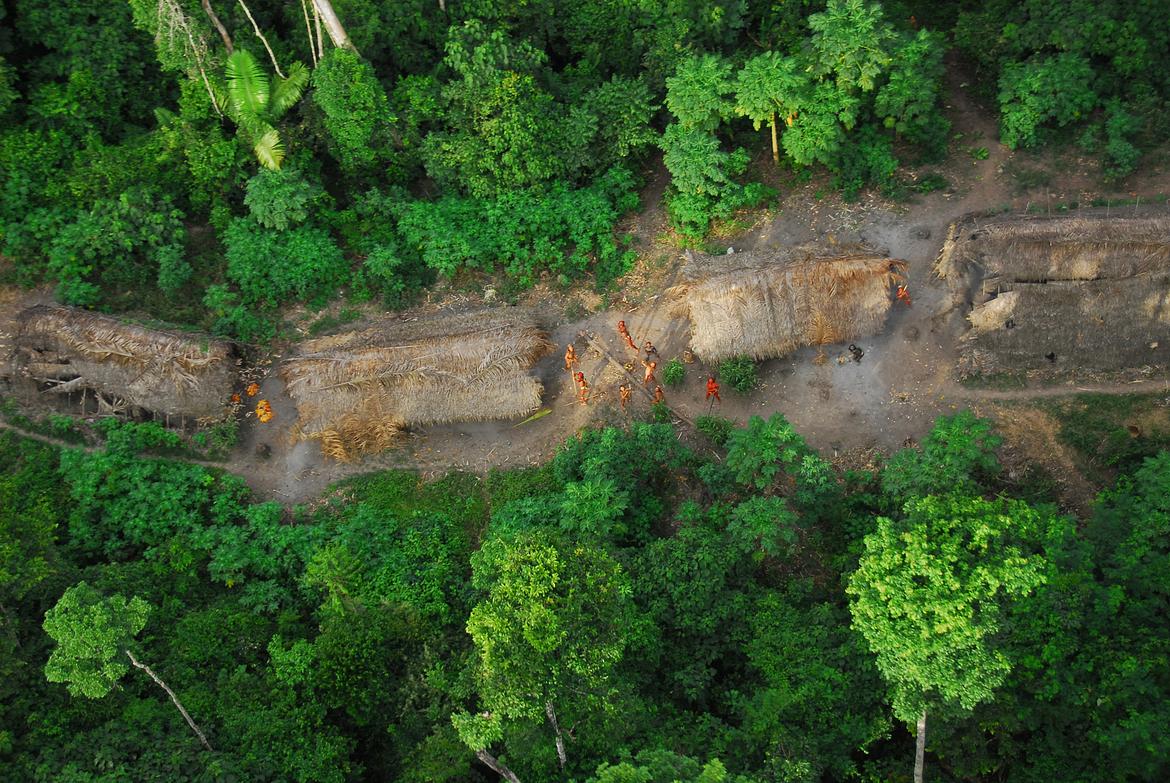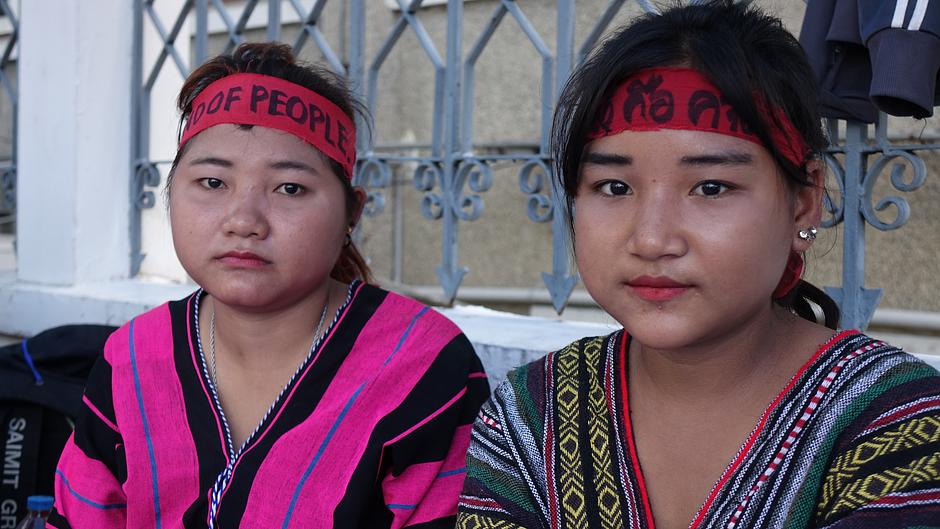India's Indigenous evictions - the dark side of the Jungle Book

While the world gears up for Jungle Book fever, something sinister is afoot in the forests of India, writes Tom Linton. No, not Shere Khan, but zealous officials illegally evicting Indigenous communities from their ancestral forests in the name of ‘conservation’ – and to make way for tiger tourism. And it’s happening across India putting millions of people under threat.
With two new blockbuster remakes scheduled for consecutive release next year, Hollywood’s opportunistic eye has once again fallen on Kipling’s famous jungle jaunt.
Amidst the industry frenzy, celebrity hype and accompanying hullabaloo, the stage is set for what promises to be a sensational showdown, pitting Disney against Warner Bros. in a battle to be crowned King of the Swingers …
On the other side of the world, however, in the forests of Madhya Pradesh that once provided the setting and inspiration for Kipling’s work, a very different battle has been underway for decades – far less trivial, and with far graver implications.
Touted by the tourism sector as ‘Kipling’s Country‘, these lands now comprise the Khana National Park. Created in 1955, more than half a century after the author left India, the area boasts a vast wealth of plants, birds and animals, including the tiger – the infamous ’lord of the jungle’ and India’s national symbol of power.
Not just tigers – Indigenous communities
But it is also home to the Baiga, a tribal people who have successfully lived in and tended the forest for centuries before colonial powers had even set foot in India.
Indeed in Disney’s 1967 Jungle Book animation, the film concludes with Mowgli falling for Shanti, a beautiful sloe-eyed girl from a jungle village, whose feminine charms captivated the young boy and seduced him out of the jungle – until the inveitable sequel. She was, surely, a member of the Baiga tribe.
Nowadays though, the Baiga’s survival is endangered. Since the 1960s, when 28 villages were displaced from within the ‘core zone’ of the park (a 1,000 square kilometer area demarcated as ‘pristine’ forest), to the ‘buffer’ zone (the surrounding area in which animals and humans are supposedly allowed to co-exist), they have faced the very real threat of forced evictions at the hands of over-zealous officials, who regard them as an impediment to tiger conservation policies.
Earlier this month, following years of sustained pressure, reports of further forced evictions surfaced, with those affected reporting threats from Forest Department officials to release elephants to trample their houses and crops if they failed to comply.
The consequences for the Baiga are disastrous. As part of the post-colonial government’s unrelenting drive towards ‘democracy’ and ‘progress’, they are ranked alongside the ‘Other Backwards Classes’, and wrongly considered primitive.
Their status as ‘adivasi’ (a Sanskrit word that translates as ‘beginning dwellers’) means that once evicted from their forest homes and left landless, they find themselves shunned by the Indian caste system and struggle to settle successfully or find meaningful employment.
The evictions are cruel, racist and illegal
For a people who worship forest deities, accustomed to producing goods and harvesting produce sustainably from the forest, the forced transition to makeshift camps and food hand-outs – on the fringes of a park they are now punished for entering – has lead to poverty, malnutrition and alcoholism. Communities have been fragmented and livelihoods destroyed.
Such evictions are illegal. The Baiga’s claims to their land are enshrined within India’s 2006 Forest Rights Act (FRA), drafted in an attempt to redress the historical injustices inflicted by pre-existing colonial forest laws, namely the Indian Forest Act and the Wildlife Protection Act. Passed in 1972, both paved the way for the government to declare any area a reserve or conservation zone.
Subject to certain terms and conditions, the Forest Rights Act makes provisions to tribes who have lived within the forest for over 75 years. It details rights to ownership and use of the land, ‘relief and development’ entitlements in case of illegal eviction, and permission to manage and conserve the land. Relocation notices are supposedly assessed by the gram sabha (village assembly), which must give its free, prior, and informed consent before any eviction takes place.
In Khana, the reality is that none of the above requirements were met, and the Baiga were poorly informed of their rights, with many completely unaware of the existence of the FRA.
For what it’s worth, India is also a signatory of both the UN Declaration on the Rights of Indigenous Peoples and the ILO Convention 107, but its lack of adherence to these documents has served only to deepen the political quagmire that has slowly congealed around the issue.
Conservation officials are peddling a false narrative
The battle has indeed become a suspiciously murky one – clearly the co-existence of man and tiger has not always been without incident, but the reductive Mowgli vs. Shere Khan rhetoric peddled by conservation officials is simply misleading and false, overlooking both the reality of the relationship and indeed the abuse of power by authorities.
There is a frankly alarming scarcity of evidence linking dwindling tiger populations to conflict with Indigenous people, and yet the waves of forced evictions continue. So what’s really going on? Stephen Corry, director of Survival International, has long smelt a rat …
“What’s happening in Kanha epitomizes the ugly side of the conservation industry – thousands of tourists career through the park in noisy trucks, clamoring to take photos of the beleaguered tigers. Meanwhile, Baiga communities that have carefully managed the tiger’s habitat over generations are annihilated by forced evictions. The irony appears to be lost on the conservationists.”
Or is it? Why then might extensive logging have been carried out in the buffer zone surrounding the park, whilst the Baiga face beatings for collecting firewood? Tourism is clearly detrimental to the tiger’s habitat, so why might WWF be advertising high-end safaris on its website?
You can almost hear the conspiracy theorists chomping at the bit. So much so that Wilfried Huismann, author of Pandaleaks, saw fit to dedicate an entire chapter of his controversial work to WWF operations in India.
Hi account includes damning reports of tiger deaths at the hands of negligent researchers – and an unfortunate photograph of Prince Philip, a founding father of the WWF, standing over his trophy kill…
Illegal Indigenous evictions taking place across India
Whatever is happening in Khana though, is sadly not an isolated event, but rather part of a nationwide purge of tribal people from their ancestral lands. Across India, between 3 to 4 million people live within the country’s 602 protected areas, of which 28 are tiger reserves.
Clear data is hard to come by, but in 2007 a National Geographic report estimated that “in the last few decades the Indian Forest Department has forcefully evicted up to 200,000 forest residents in the name of conservation” – a number that looks set to rise.
But it’s not all doom and gloom. In 2011, the Soliga tribe in the southern Indian state of Karnataka won a landmark battle to secure their rights to live within the forest, despite it falling within a tiger reserve.
Whilst the Baiga, comparatively ignorant of their rights, have found themselves tricked into signing blank pieces of paper (later used against them to prove their ‘consent’), the Soliga have managed to defend themselves resolutely from attempts to remove them. The tribe’s claim that they are central to the survival of both tigers and their habitat is one that was wholly endorsed by Stephen Corry in the aftermath of the ruling:
“The Indian government is beginning to realize that tribal peoples are the best conservationists, by far. If only the rest of the world could catch on. Evicting tribal people from their ancestral land in the name of ‘conservation’ is not only illegal and destroys them, it also spells disaster for the local environment and wildlife.”
‘Parks Need Peoples’
The idea is one that underpins one of Survival’s key campaigns. Launched in 2014, ‘Parks Need Peoples’ is an ambitious drive to press for a new type of conservation – one that finally adheres to international standards on human rights and tribal peoples.
At the heart of the campaign lies the unshakeable conviction that ‘tribal people are better at looking after their environment than anyone else’, and that the current conservation model cannot succeed until it recognizes this.
For anyone as yet unconvinced by the organization’s wealth of knowledge on the subject, drawn from years of field research, Survival is not short of hard evidence, and its striking satellite imagery mapping deforestation in the Amazon proves difficult to ignore (see photo).
What’s more though, in the case of the tigers the message seems to be slowly trickling through. Writing in The Hindu recently, former cricketer turned author and Indigenous activist, Saad Bin Jung:
‘’How do these people who were living and eating from the jungle live if they are banned from entering the forest? They aren’t the cause of deforestation. Where is the alternative for them? The same government who is banning them from entering the forests isn’t providing them with a means to make life livable for them. Where do these people go? … "
“The writing is on the wall. Forest officials must stop hiding behind the so-called man-animal conflict and the Wildlife (Protection) Act of 1972. If we are to conserve our wilderness, we need a hard-hitting yet sensitive conservation act that also addresses, as an integral part of conservation, the local people-authority conflict upfront.”
But India’s government remains fixed on its course
But reign in that cautious optimism – for now at least. Happily for the tiger lobby, a report published last month purports to show a 30% rise in population numbers.
For Pravash Javadekar, India’s environment minister, the findings are proof that the conservation model of reserves controlled by forest guards is working. Unsurprisingly, he has been quick to call for more tiger reserves. Should he get his way, the implications are seriously worrying, not only for the Baiga, but for Indigenous people throughout India.
All of this might make for uncomfortable reading now, but when we are sitting comfortably, crunching on popcorn with Mowgli and friends, let’s not forget what’s really going on in the jungle.
Conservation will never truly be a success until it recognizes the rights and needs of all parties involved. The tiger might be safe for now, but India’s tribes need our help.





